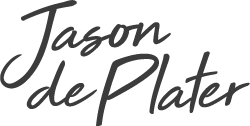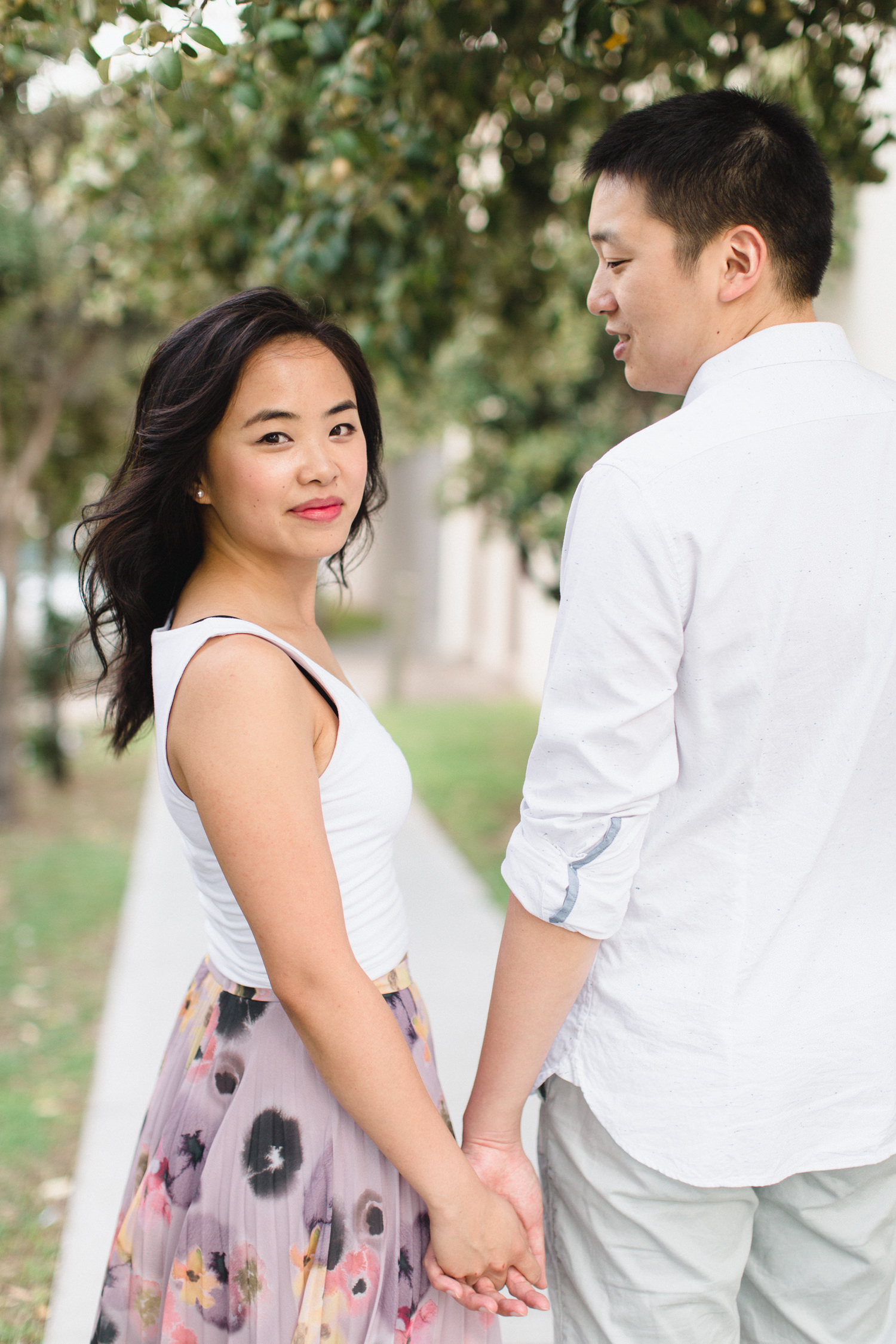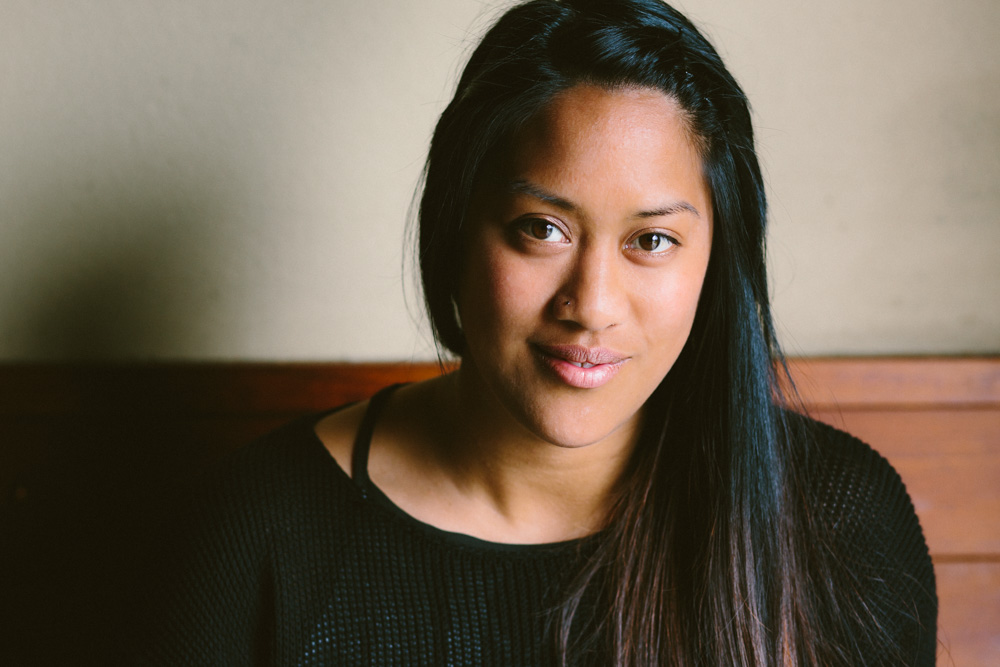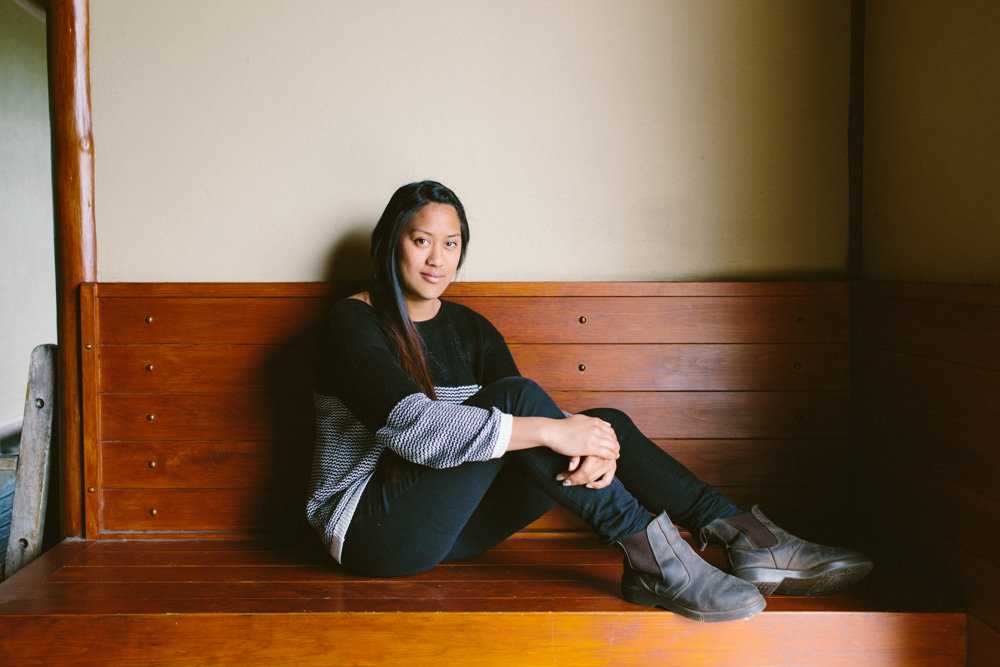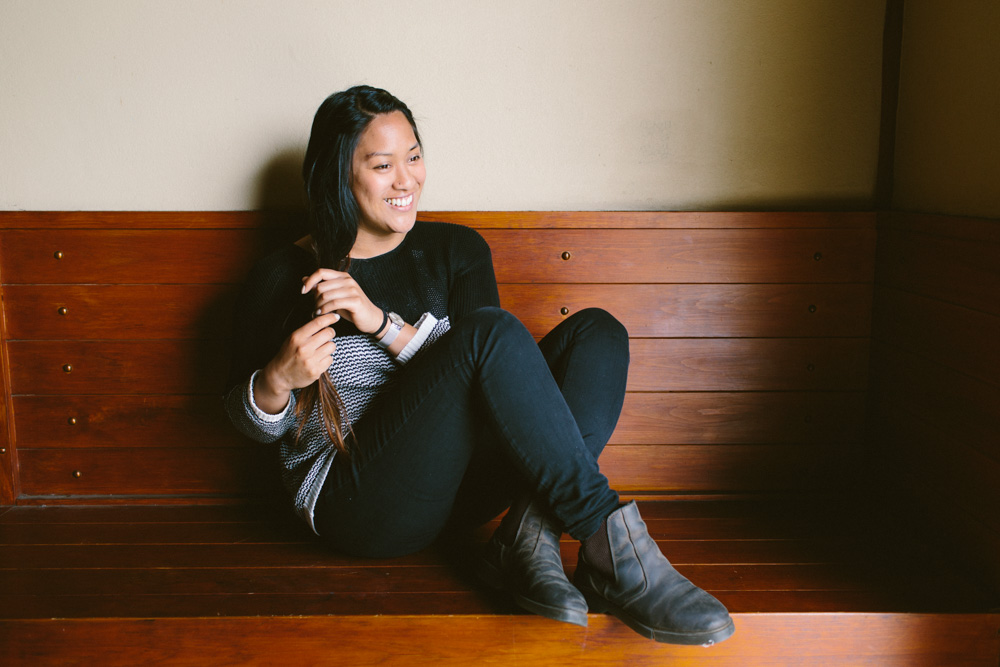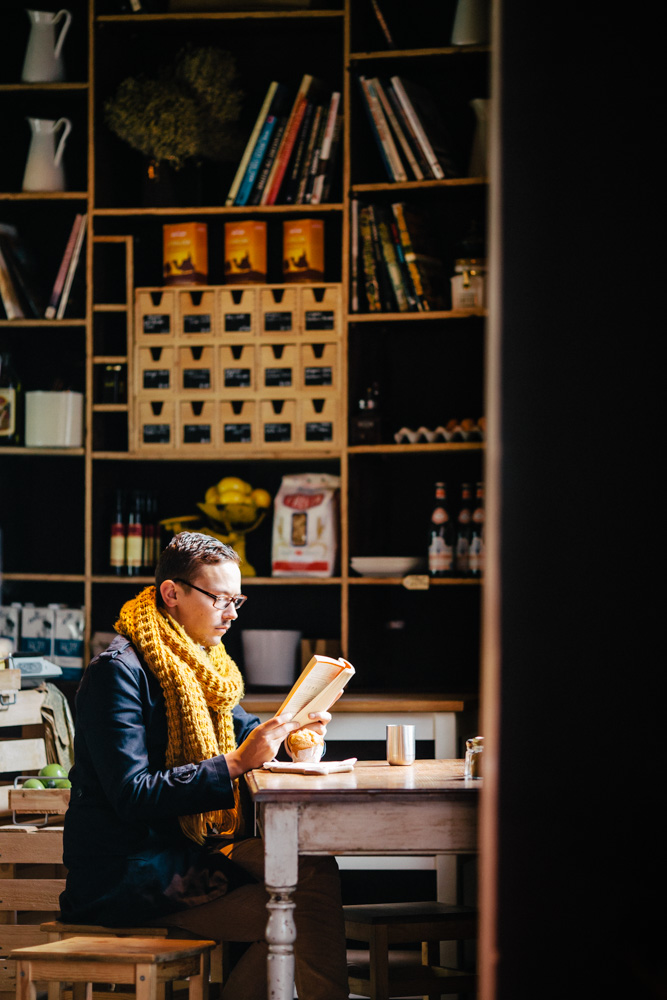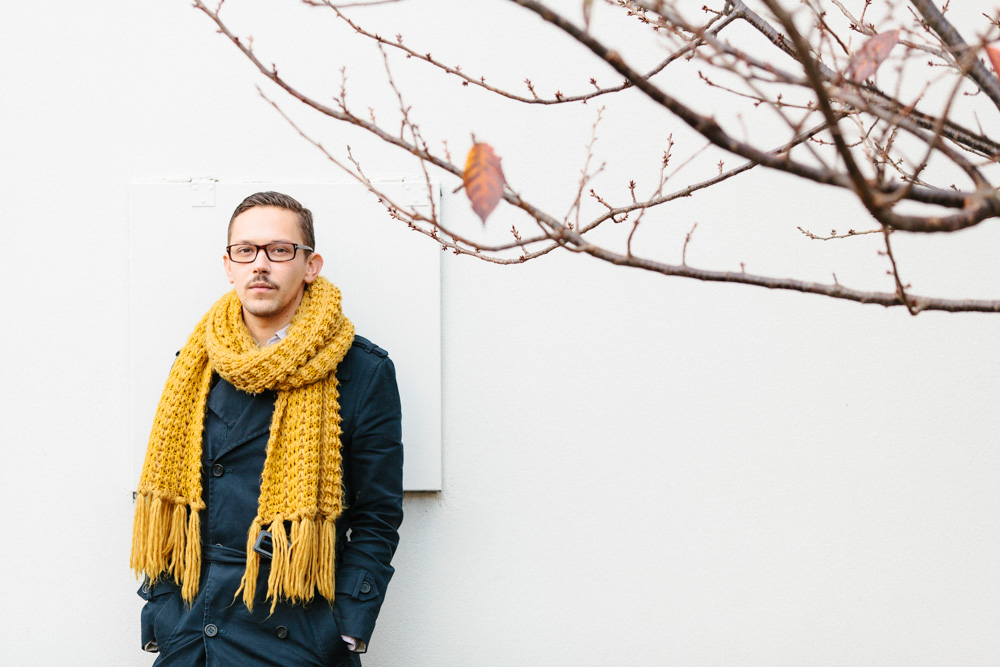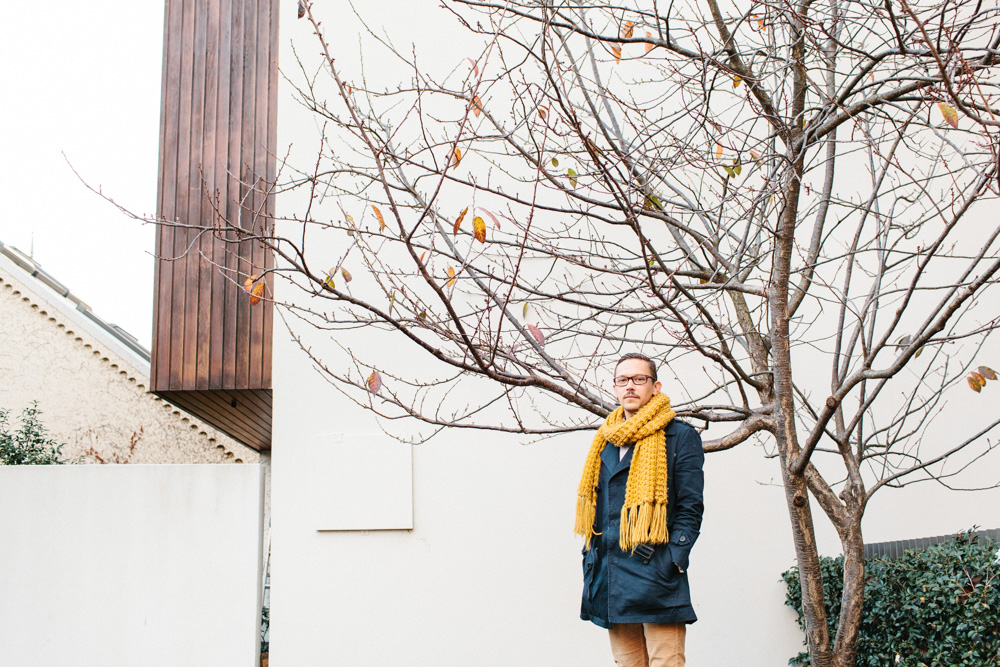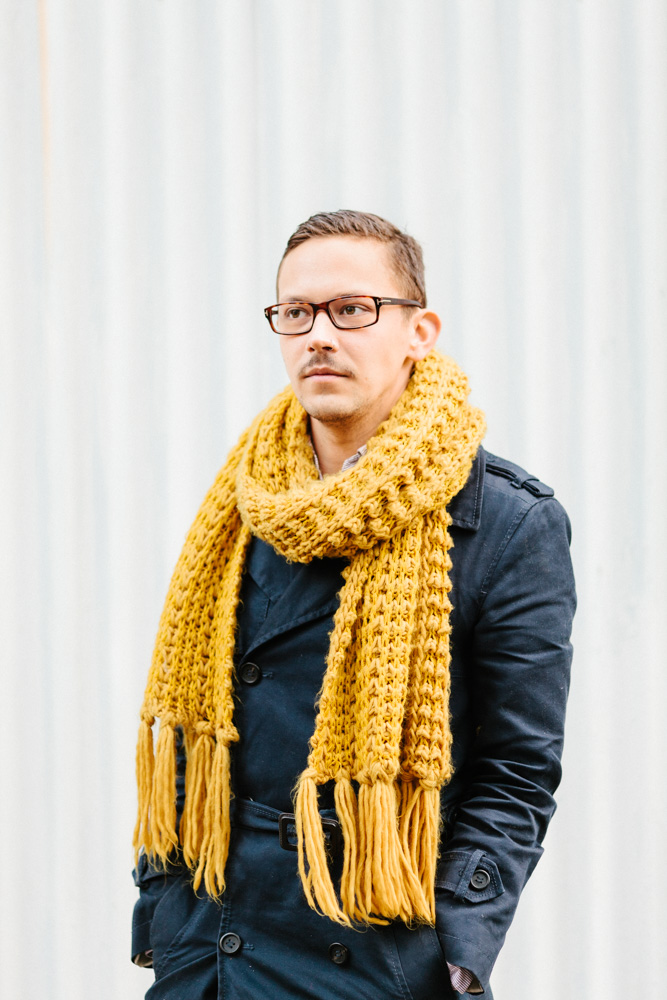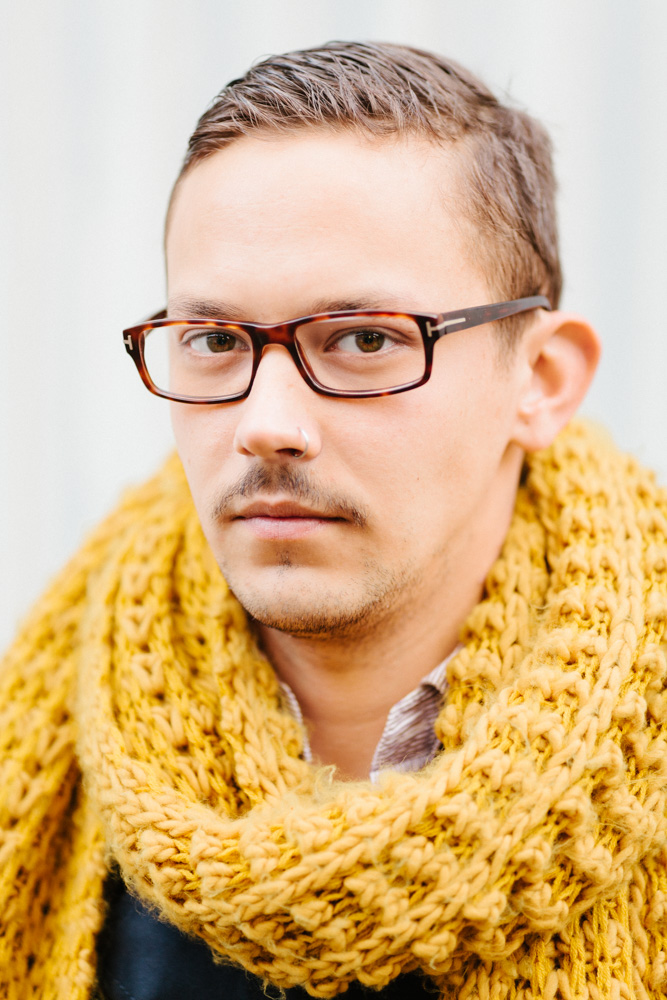Anne Marie Taberdo, 28, is the head ice sculptor at The Icebox, London. I caught up with her in Wollongong on Sydney's south coast where she was creating a piece for a wedding.
Can you give us the backstory on how you came to be an ice sculptor?
Well I was struggling to find work as a full time sculptor but I previously got a break to work at the British Museum as an intern making replicas of their objects in the museum. That was an incredible job for someone who completed a degree in the National Arts school in Sydney and had moved to London to finish their post graduate degree.
I spent a year working with the replication specialist at the British Museum and he taught me some really amazing things about moulding and casting objects. That lead me into a job with Madame Tussaud at the wax museum where I made the bodies of famous people. People like John Farnham, Michael Jackson, Madonna etc. That was a great experience to use my moulding and casting techniques I had practiced the previous year.
Before I got into Madame Tussauds, I had written numerous letters to various sculpting firms and film companies employing prop makers to try to use the skills I learned in art school. One of them was an ice sculpting company. Naturally I hadn't thought about ice sculpting previously, I just knew that it happened. Ice just.. gets.. sculpted laughs. So I thought that it has got to be sculpted by someone, I don't know who that is, I had never an ice sculptor before, so I thought I'd just write a letter to an ice sculpting place to find out.
A year later they got back to me when I was already at Madame Tussauds. This company called The Ice Box asked if I was still interested in ice sculpting because they had interviews coming up for the head sculptor position. So I went for the interview, never ice sculpted in my life, and had to carve a block of ice in front of them for the first time. Within 3 hours I had sculpted a female figure, as that was what I was comfortable with due to the wax works experience. I got the job.
That's amazing how the first time you sculpted ice was at the actual interview. What did you think of your first piece? Were you shocked that you could do that straight off?
To be honest I was quite shocked at my first piece for the interview. I thought there was no way I could of come up with something in 3 hours. But I quickly realised how fast it is to sculpt ice as the material itself is so soft, like carving butter. It's a good way to see what you've learned because it is such a fast outcome as you're sculpting as you are able to see what you know about the subject and just trust your artistic instinct.
How forgiving is the medium?
It's as forgiving as you are I think, if you get stuck on little details you're going to have a hard time with ice sculpting. Although you can make really detailed sculptures, the material is always changing because it's melting. Especially when you're carving live, you always have to re-adjust the design.
When you think of your greatest achievement so far, is there something that comes to mind?
The London Ice sculpting Festival of 2014 in Canary Wharf is a really amazing occasion where 10 different international teams come to compete. I got to represent the United Kingdom this year. It was the first time I've ever done an international festival and carved in front of people. We had 500,000 guests come to see the festival over a 3 day period. My teammate Mike Kerslake and I ended up winning the public choice award, which in my eyes was the best award you could win so I guess that is my greatest achievement.
Well it doesn't get much better than that, representing the UK and winning an award! Can you tell us how you ended up living in London?
I was born in the UK, so I'm a British citizen and I grew up in London and North East of England. When I was 13 my family and I migrated to sunny Australia. I think it was a bit too cold for us in England. I spent 9 years in Sydney where I continued my High School studies, then went to the National Art School in Darlinghurst, Sydney. I think it's one of the best art schools in the world, I'm a little bit biased but I think it's true. My art education started in Campbelltown Performing Arts High school where I had really great teachers in the Arts department so that's really where my art education began. That helped me continue the love that I realised I had for art when I was much younger, still living in England.
After Art School I decided to do further study but return to London. I was a dual citizen now so I took the opportunity to study in London at an adult level. I got a Bachelor of Fine Arts specialising in sculpture from the National Art School, then I got a Post Graduate Diploma of Fine Art Sculpture at the City & Guilds of London Art School. Masters is still on the horizon but at the moment I am quite comfortable in the working world.
Now that you're in the working world as an artist. Can you give us an idea of what a typical week is for you at The Ice Box and how many pieces you create?
I cycle 8 miles to work through London going past some of the most epic buildings in the world. That's a great part of my day because it keeps me warm which is really important since I am working in a -8 degrees celsius freezer. Over a length of time it can get quite cold! It tends to get to your bones quite quickly.
On Monday I have a meeting with all the staff to get briefed on upcoming jobs for the week ahead. We plot our week out which requires I work in the freezer with another sculptor called a machinist who cuts ice using a computerised drilling system. I will then hand finish the pieces he works on but I also start pieces from scratch myself.
In a day I could be making up to 3 sculptures, standard size which is about 120 kilos worth of ice for each sculpture. Each week is so different because ice is connected to the event industry mainly and these events are often last minute. Especially decoration, which ice falls under is often left to last.
How do you stay motivated and inspired? What is your favourite part of the process?
I just love sculpting. It's hands on with tools, chiselling and chainsaws. What gets me through the big weeks is the fact that I get to sculpt. Whether it's ice or not, the bottom line of it all is that I am still sculpting. I teach ice carving every now and then and ask people when they first carve how it feels. They always say that it's therapeutic and much more relaxing than they thought. That's what I've found, especially when you get in the zone. I often put my earphones in, listen to music and get on with it.
I wouldn't of picked that it would be therapeutic to work with a chainsaw.
Laughs, well most people I teach don't get to use the chainsaw, but with the chisel it's the simplest method of carving ice and it really is a nice feeling. It's something to do with the sound of the chisel I think too.
Do you have a favourite piece of work that you have created to date? Or is it always, whatever is the next piece?
The one I am most proud of is a Canon camera actually. It was for a camera exhibition in London and was a mixture of the computerised drill, and me hand carving all the details. So it was a really beautiful, detailed piece and quite big too at 1m wide x 0.5m high. I was really happy with that.
What's next for you with your creative pursuits?
At the moment it is to continue ice sculpting, I am really enjoying the medium. I want to keep doing it till I can't do it anymore physically, because it's quite hard work. I've got ideas of traveling the world with it one day too as you do with things that you love. There's an ice sculpting world tour that I'd like to be part of and represent the U.K. or Australia ice carving in competitions from Canada to Russia. There's an Ice Hotel Sweden that I'd love to design a room for, so hopefully that is in the pipeline if I knuckle down. But I'm enjoying working in London, it's a great city.
I understand there are very few female sculptors in the world. How does that make you feel?
Yes, I've been told that I'm the only female commercial ice sculptor in the U.K. which I think is an impressive feat. I think I understand why because it's a really hard and physical job. I was initially scared of applying for it actually. I'm happy about that claim though, if it's true. If there are any others I'd like to meet them, I know there's quite a lot in America but it's quite a niche job all around.
Where do you get your inspiration from?
I always listen to music while i'm sculpting and I choose the album depending on what kind of sculpture I'm making. At the moment I'm listening to some classical music, but also electronic music.
Recently I'm inspired by sand sculptors and other sculptors that are working in a medium that is very temporary like ice is - how it melts away. So whatever you create today, is gone tomorrow. With sand sculptures it's quite a similar feeling so I am really inspired by artists that are able to let go of their work. That's quite a hard thing to do for a lot of people due to the amount of hours you spend on one piece but in a way to me, it is much more free to create work that is of the moment. I am really inspired by Andres Amador at the moment and I will leave you with a quote that really resonated with me.
“Immediacy is one of the main messages of my art. Life can’t be postponed, it’s now or never. So many people in this world spend so little time inside these experiences. I think we crave it, I think we massively crave it - the immediacy of life happening. I hope that through my works, in the moment, someone is inspired with a sense of awe or wonder or appreciation and hopefully at a larger level, people are inspired to go big, to be bold, to be whimsical.”
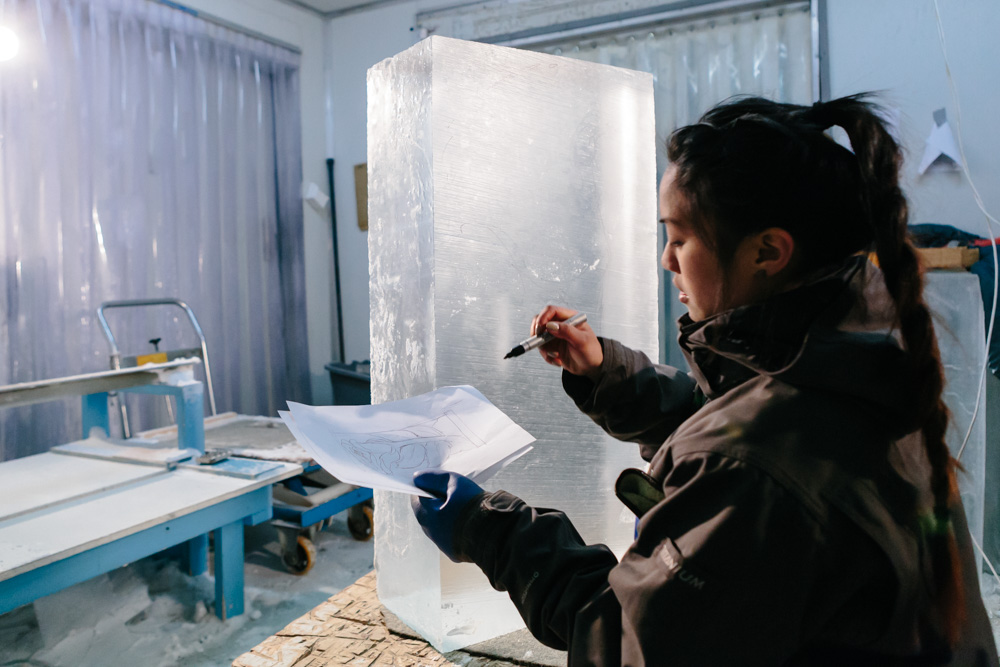
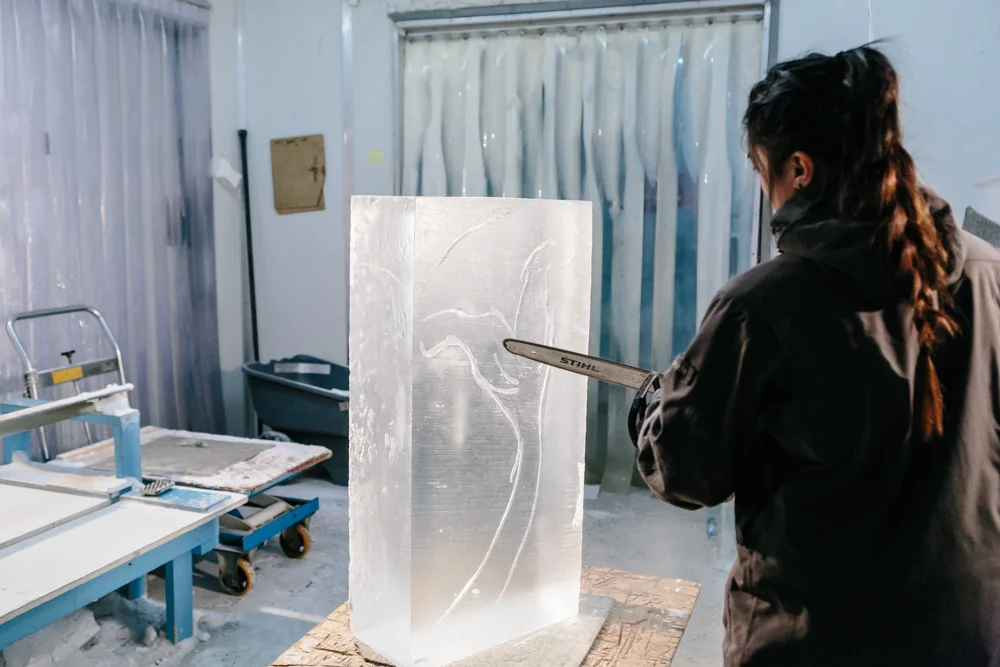
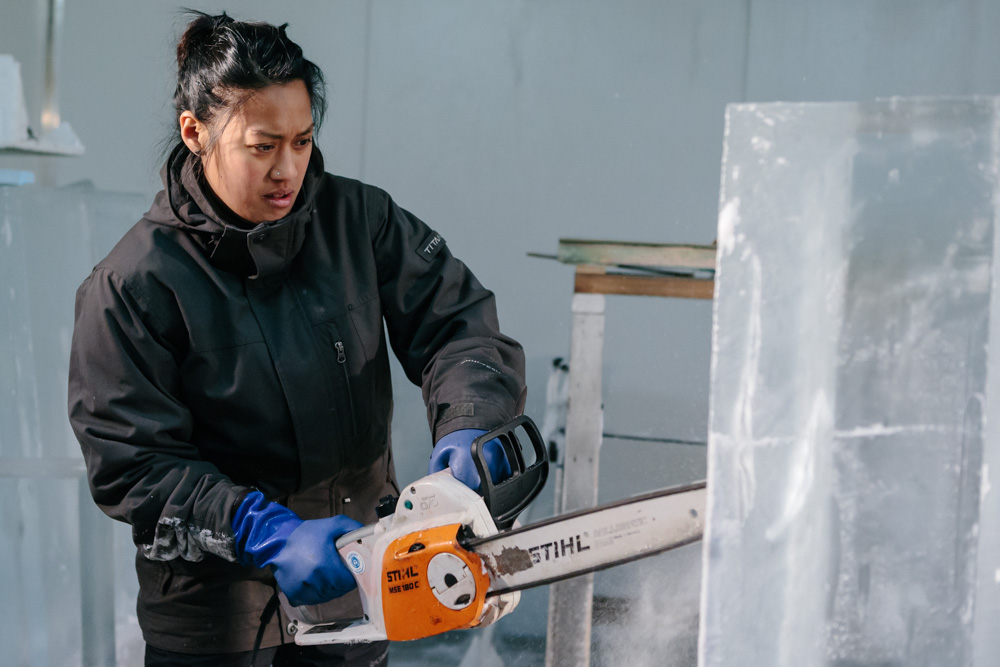
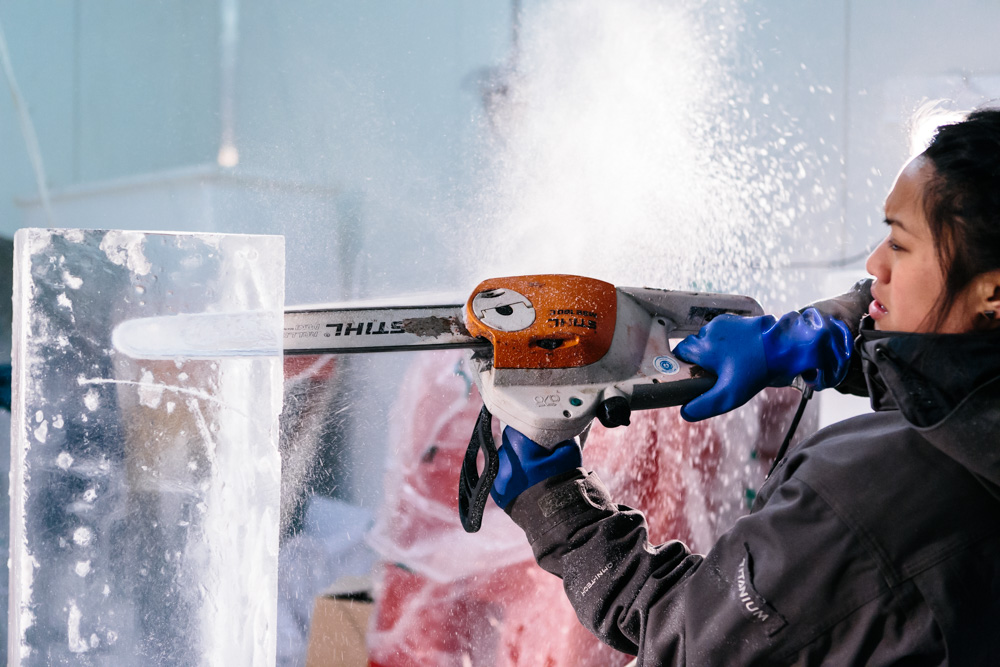
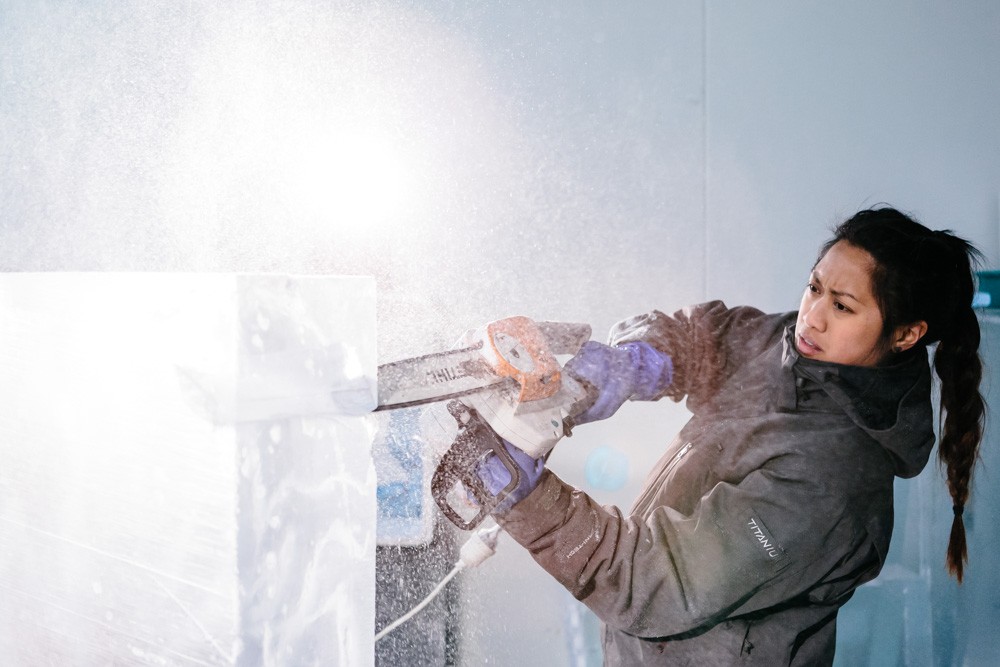
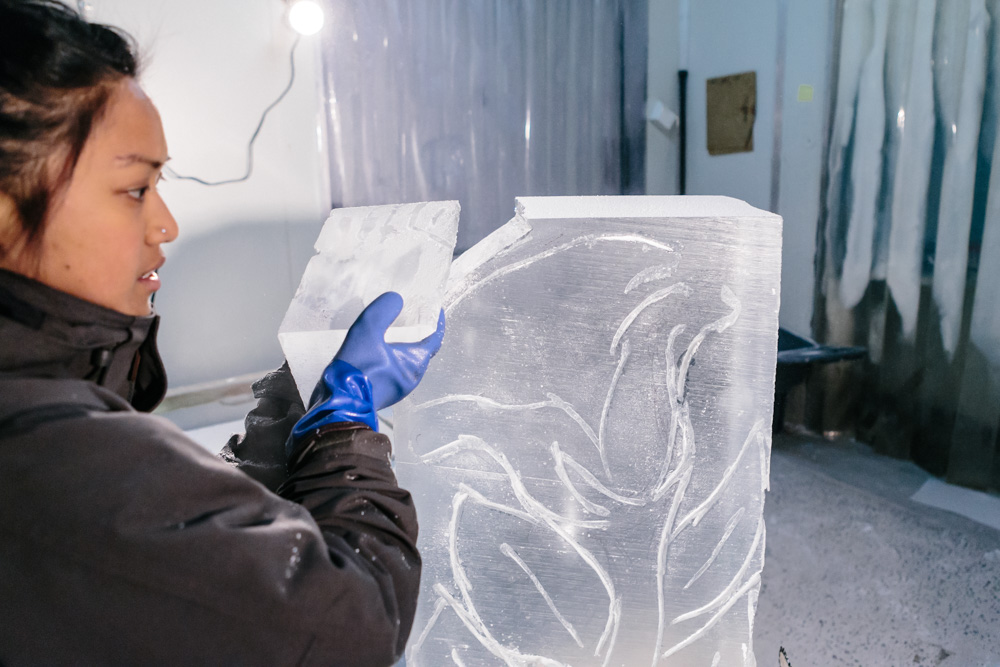
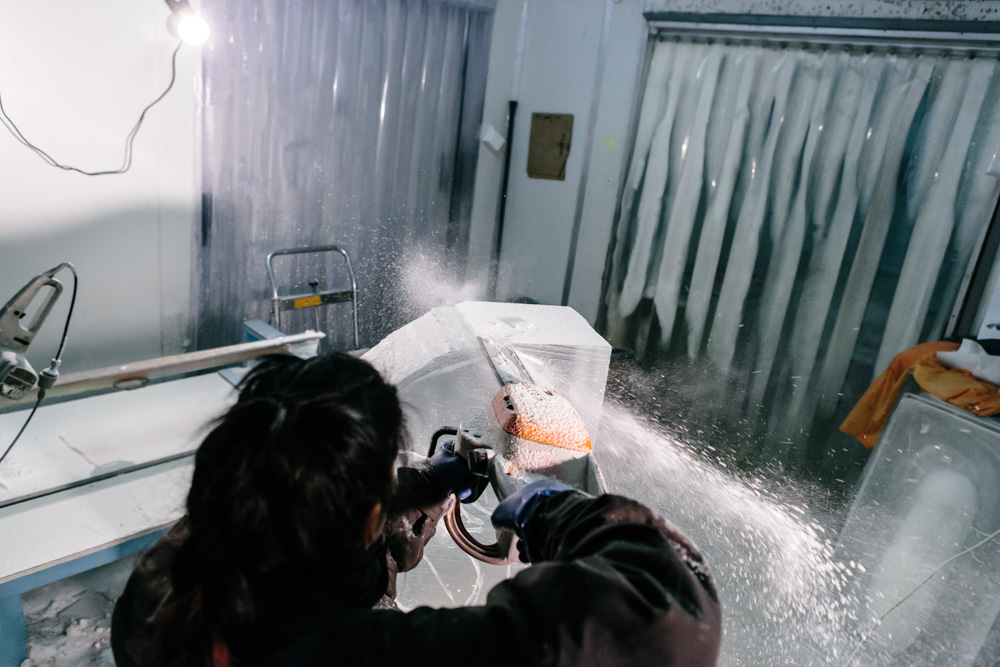
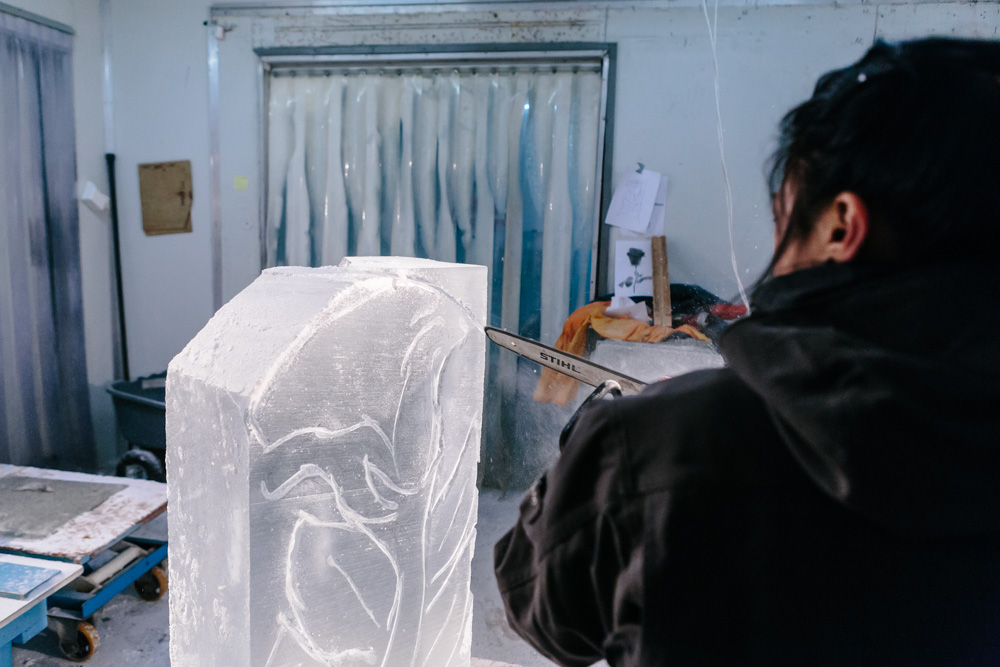
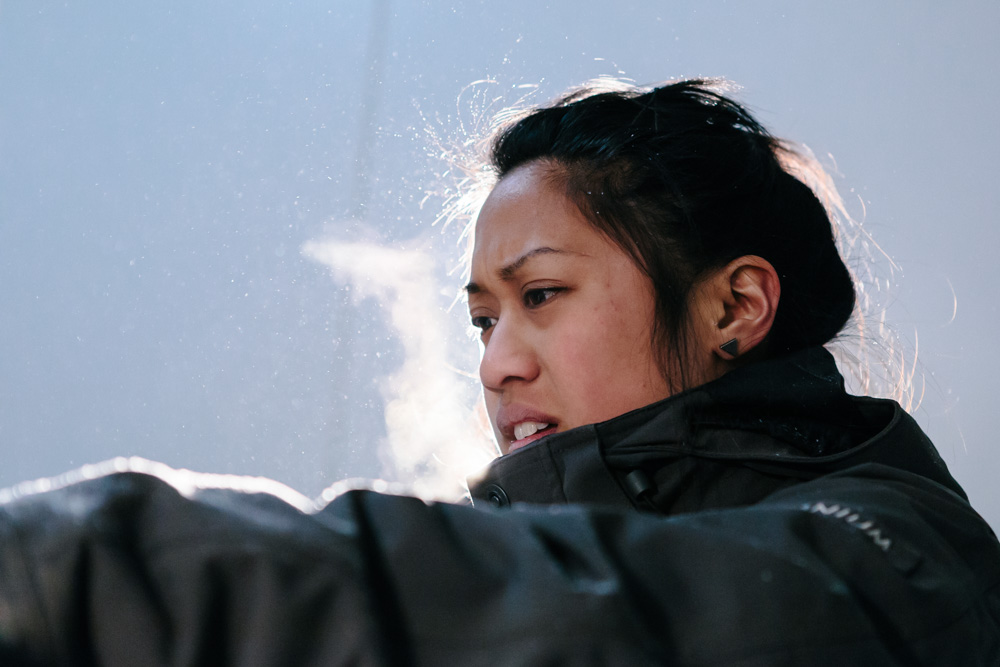
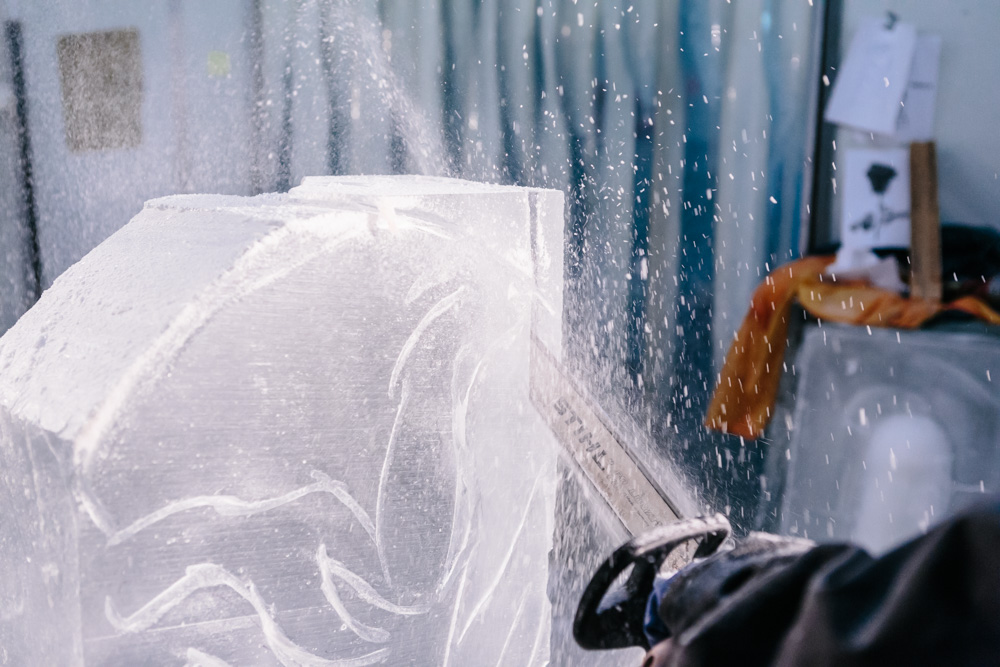
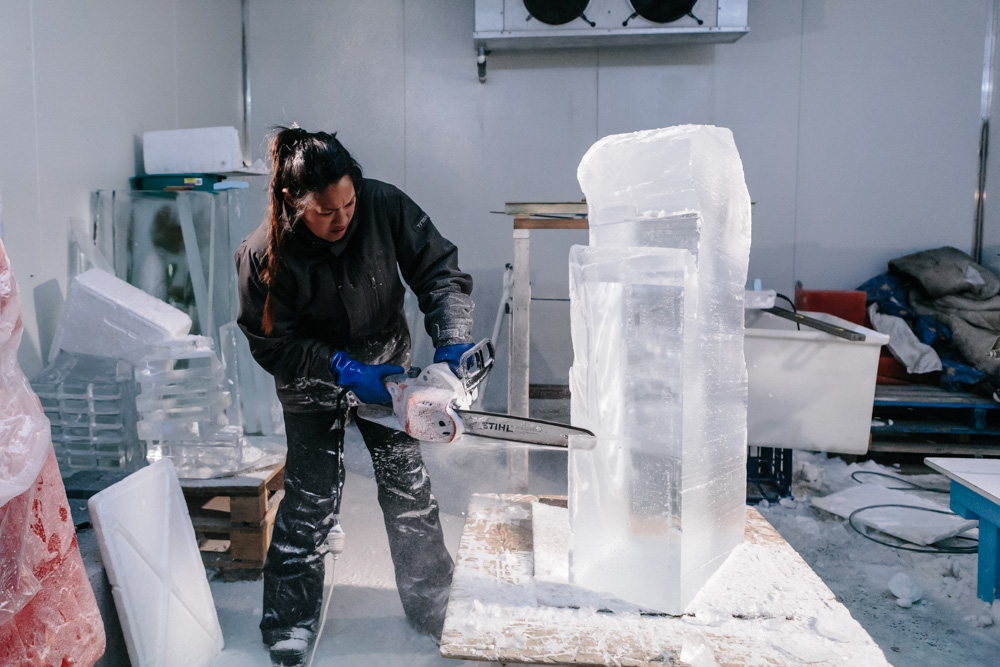

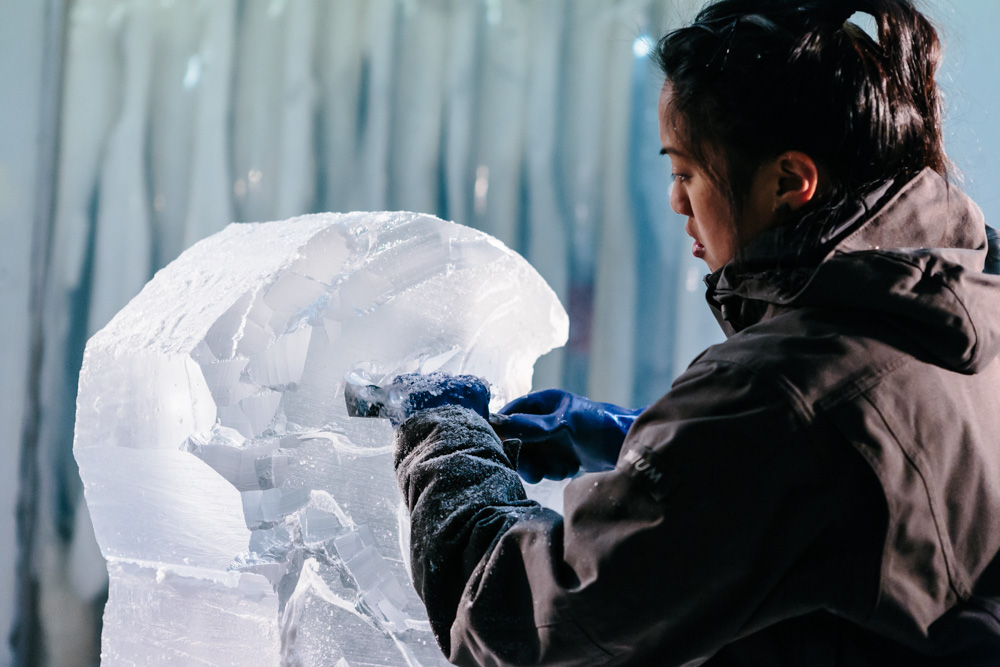
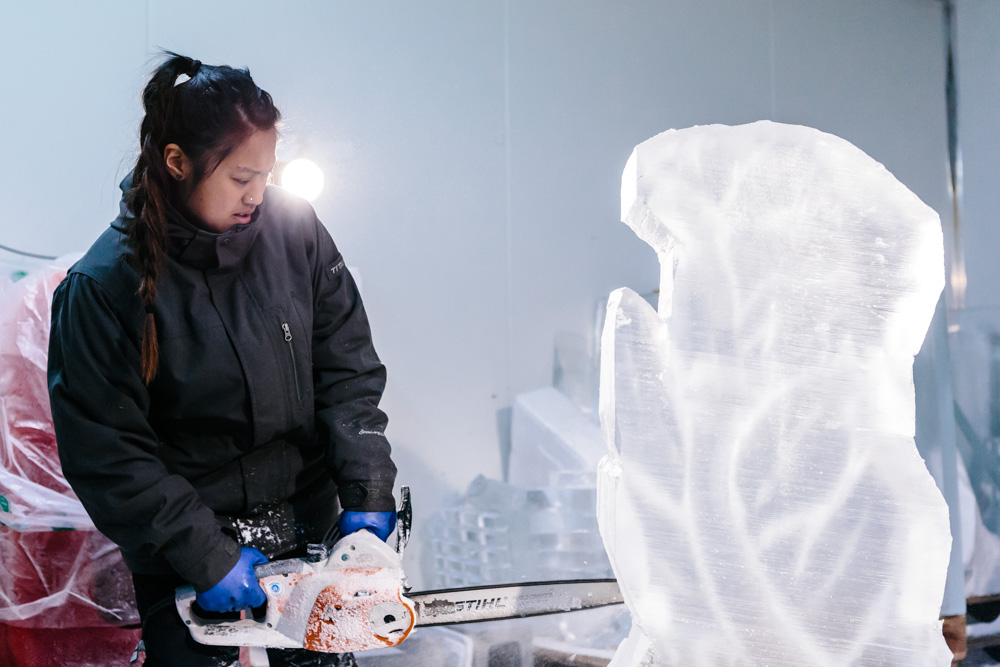
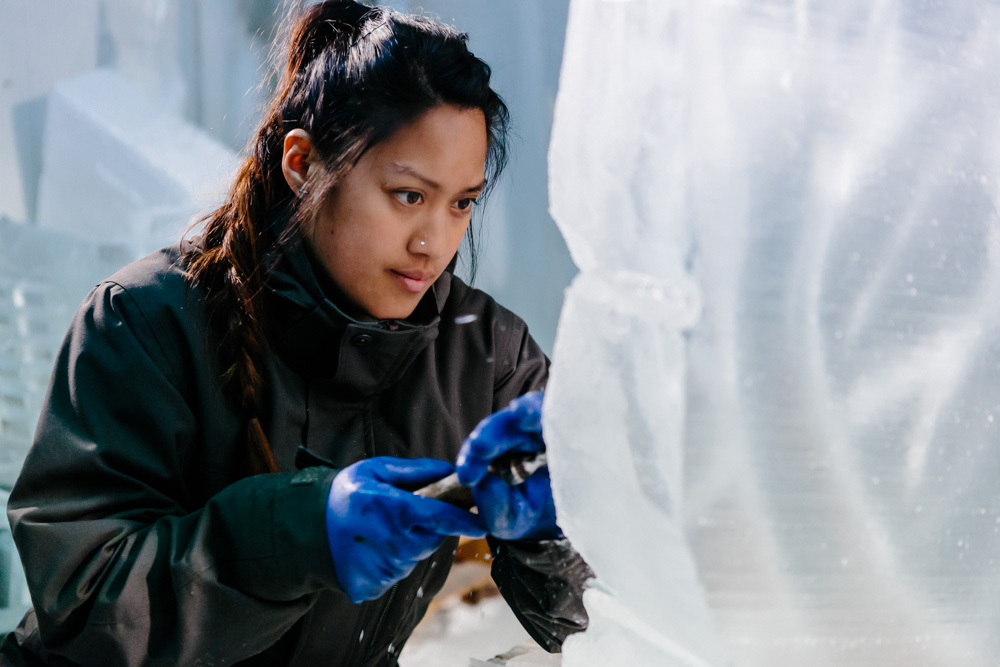
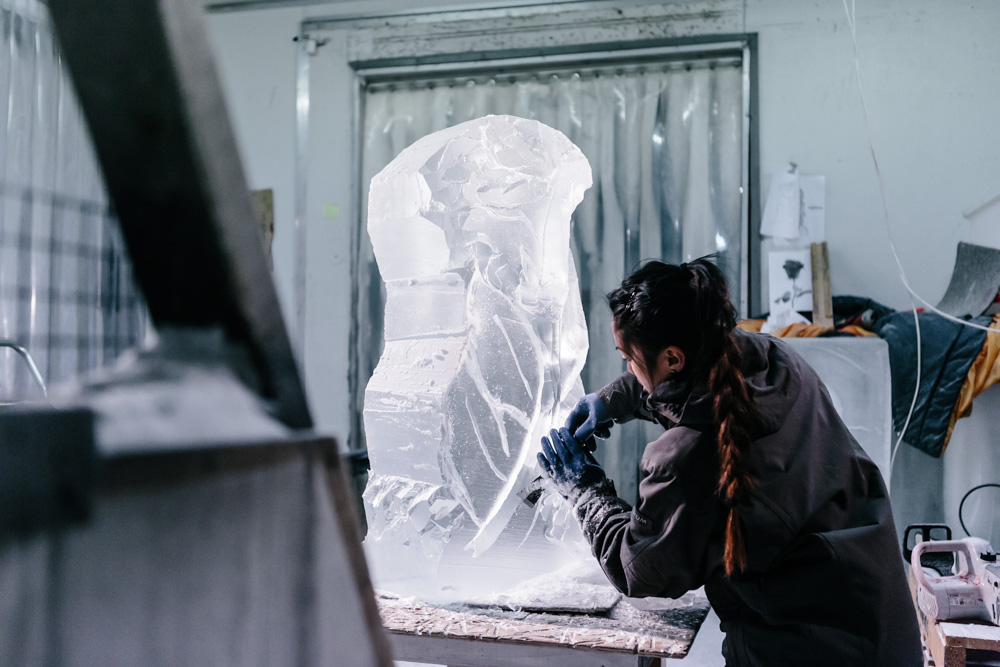
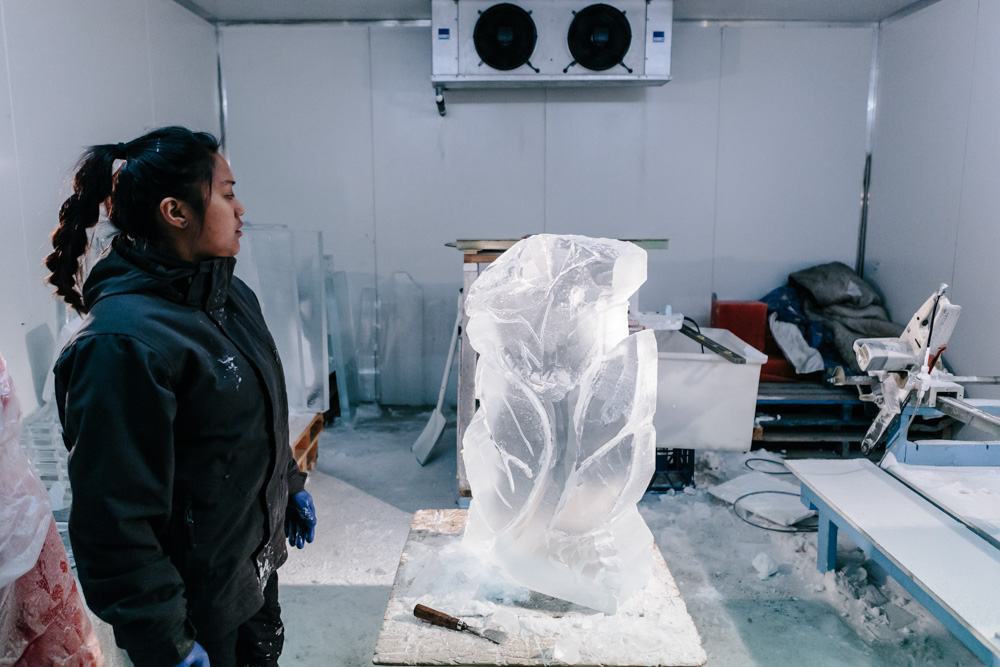
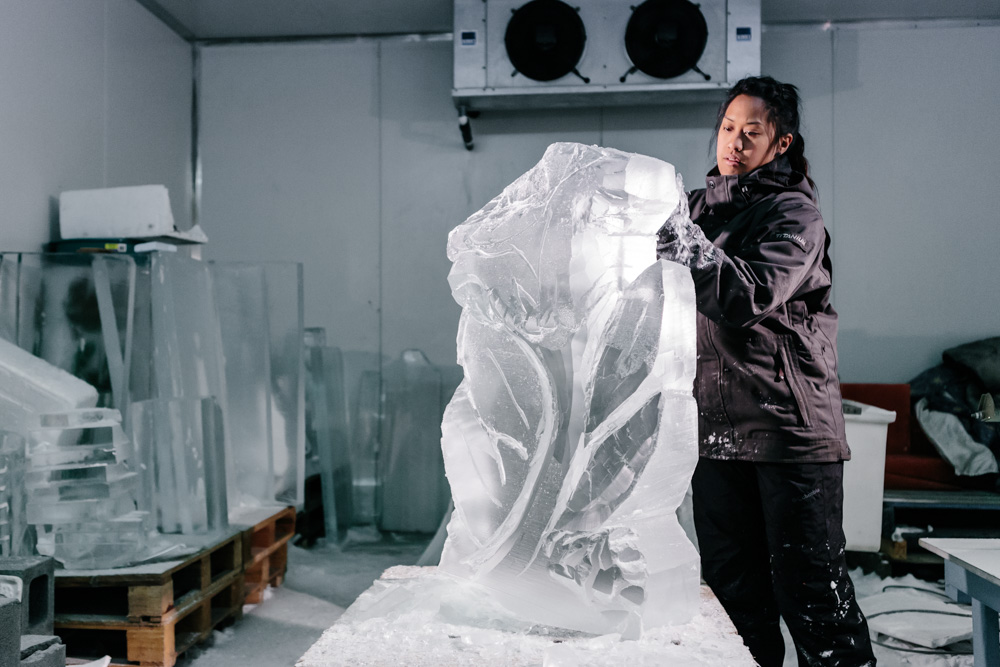
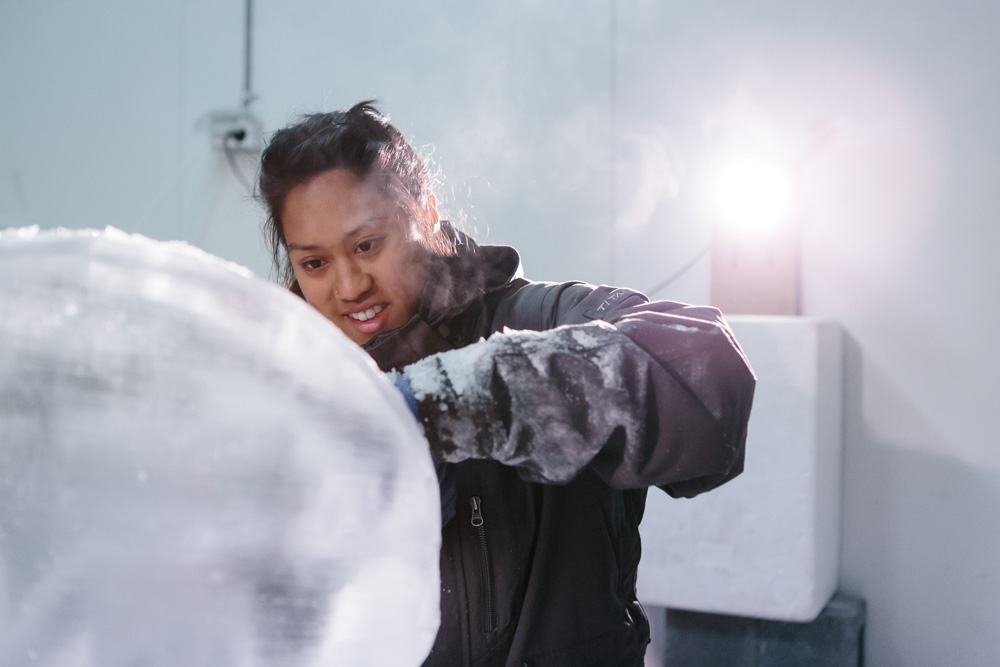
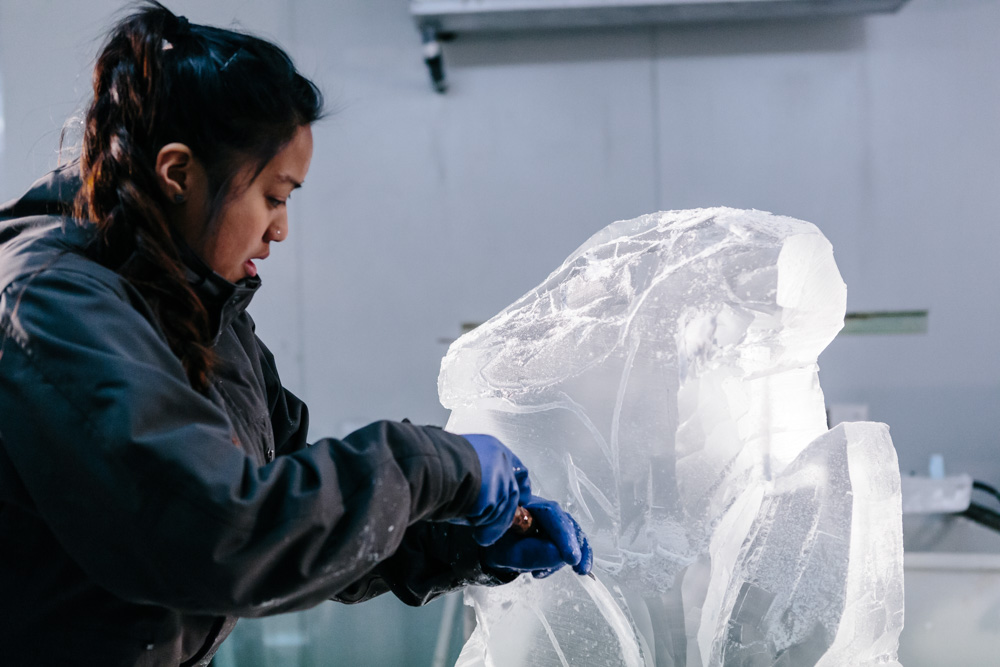

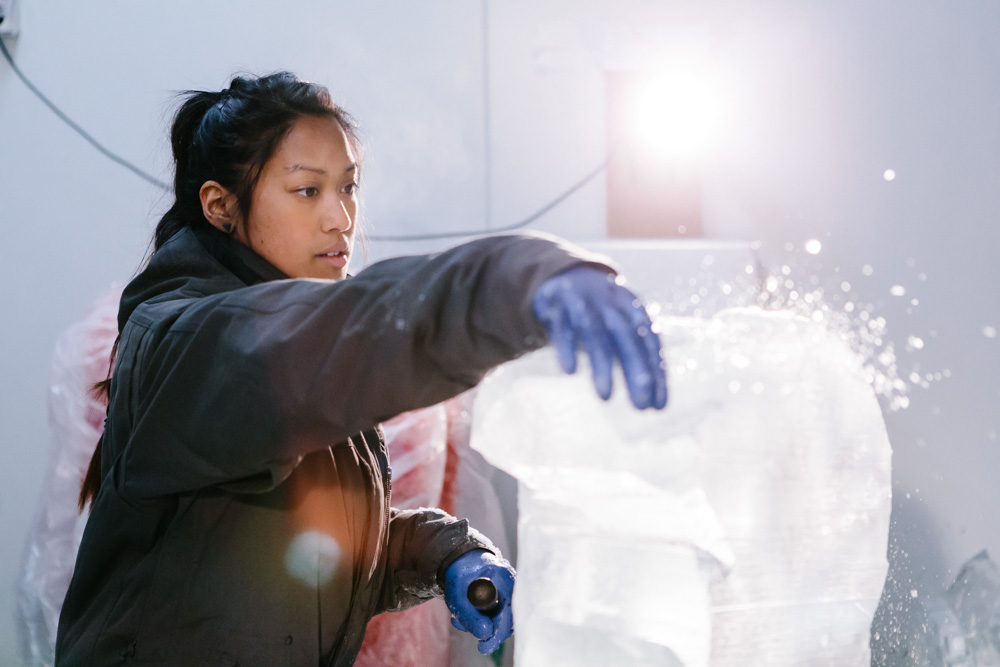
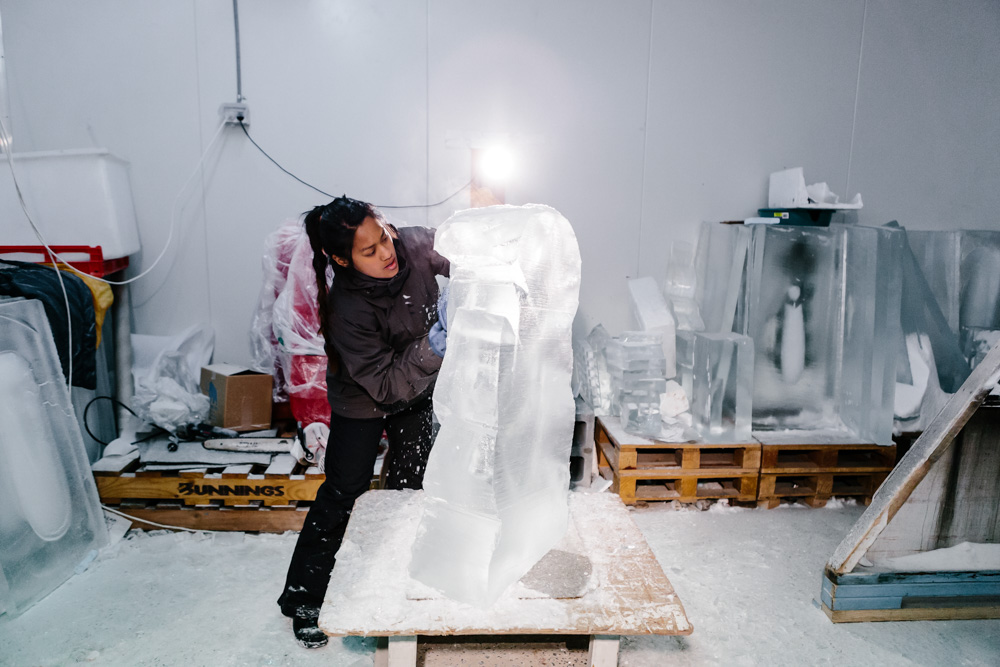
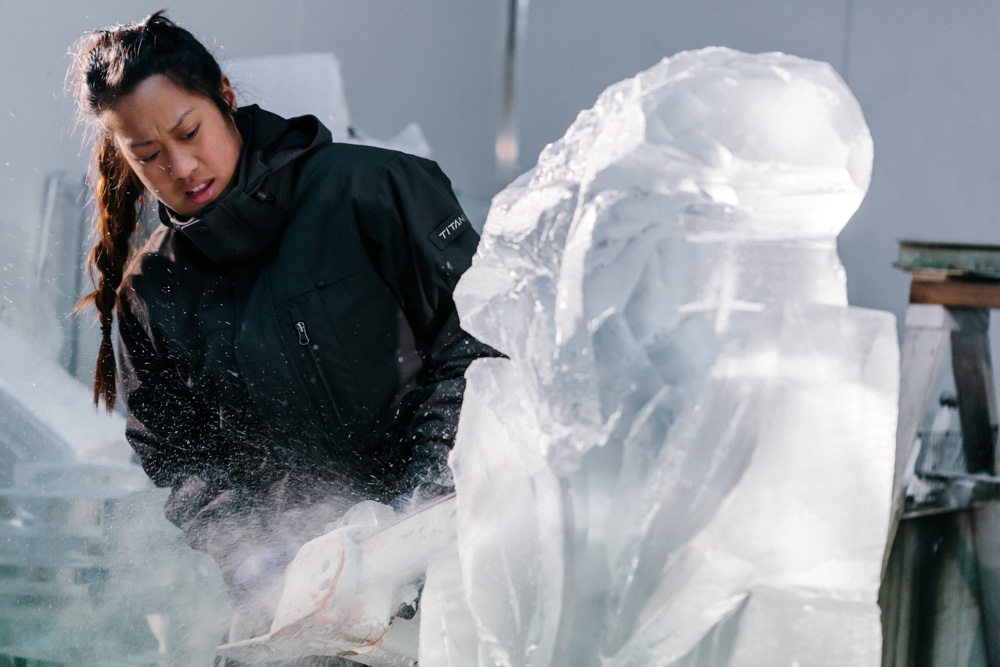
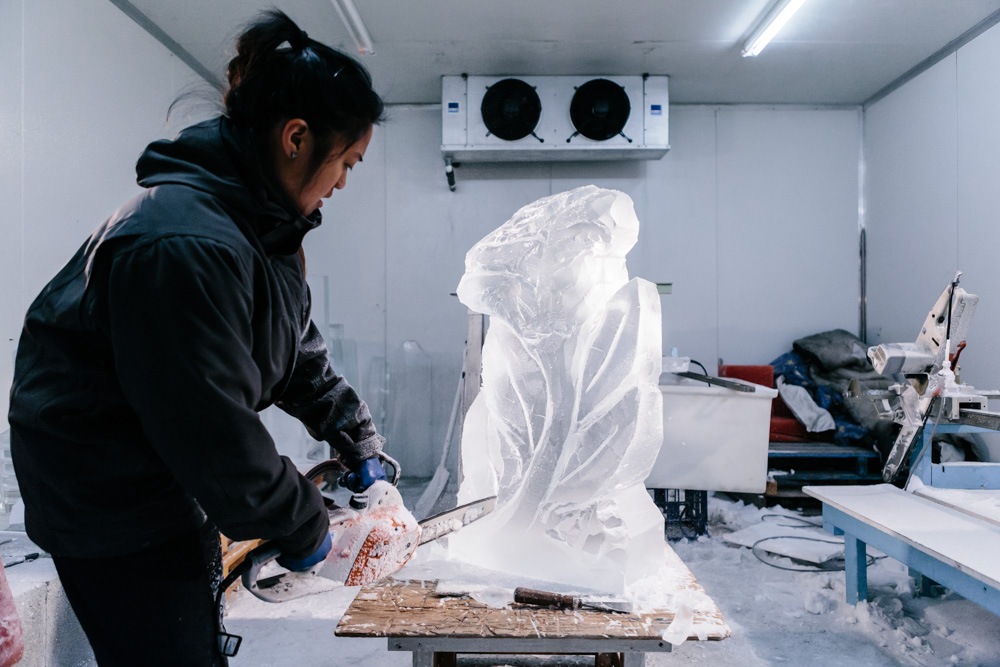
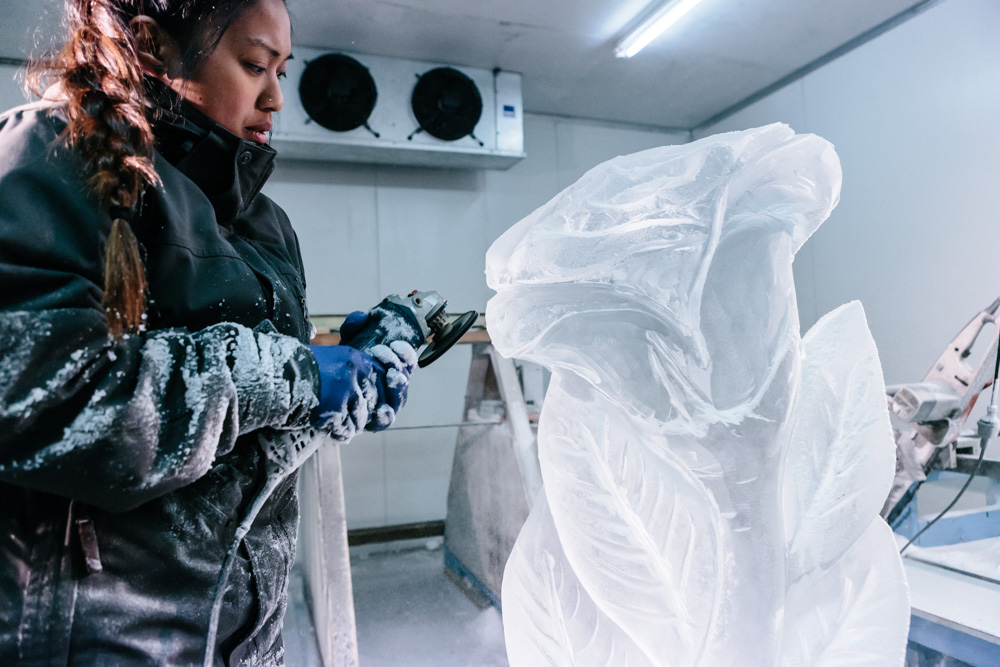
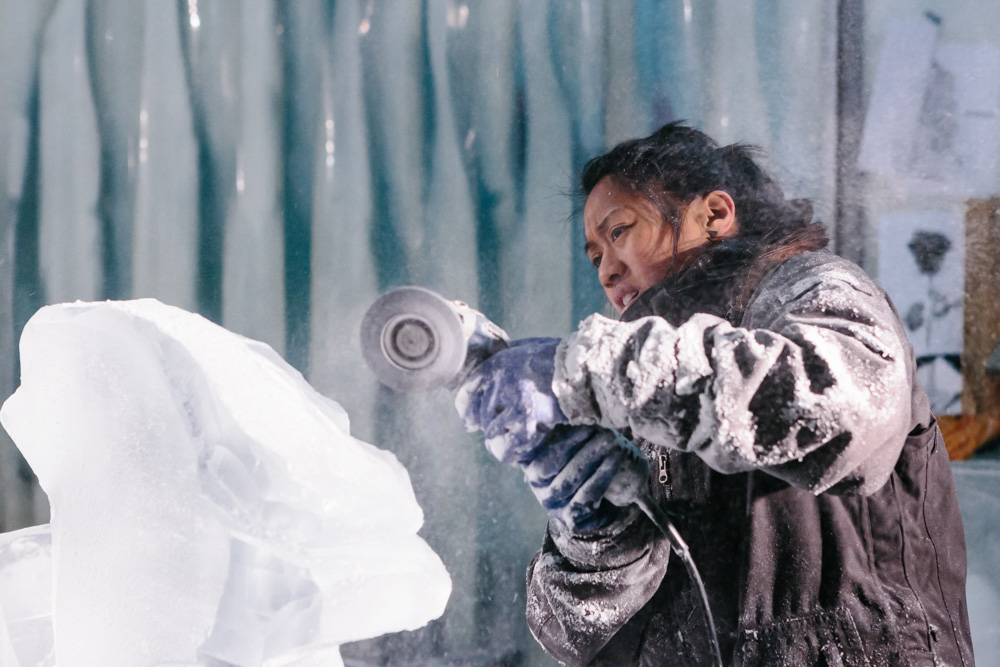
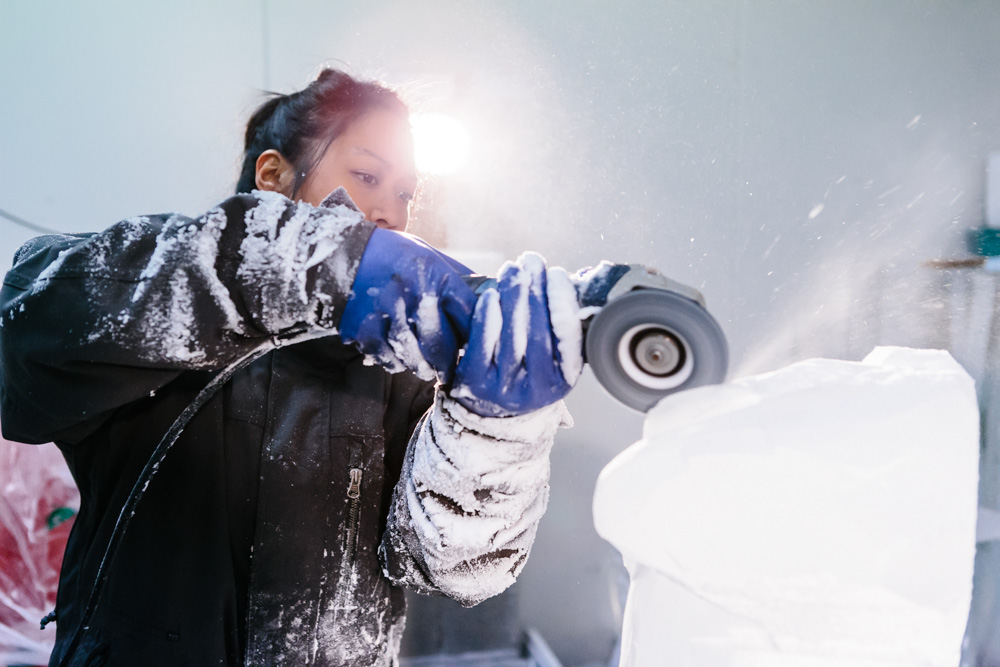
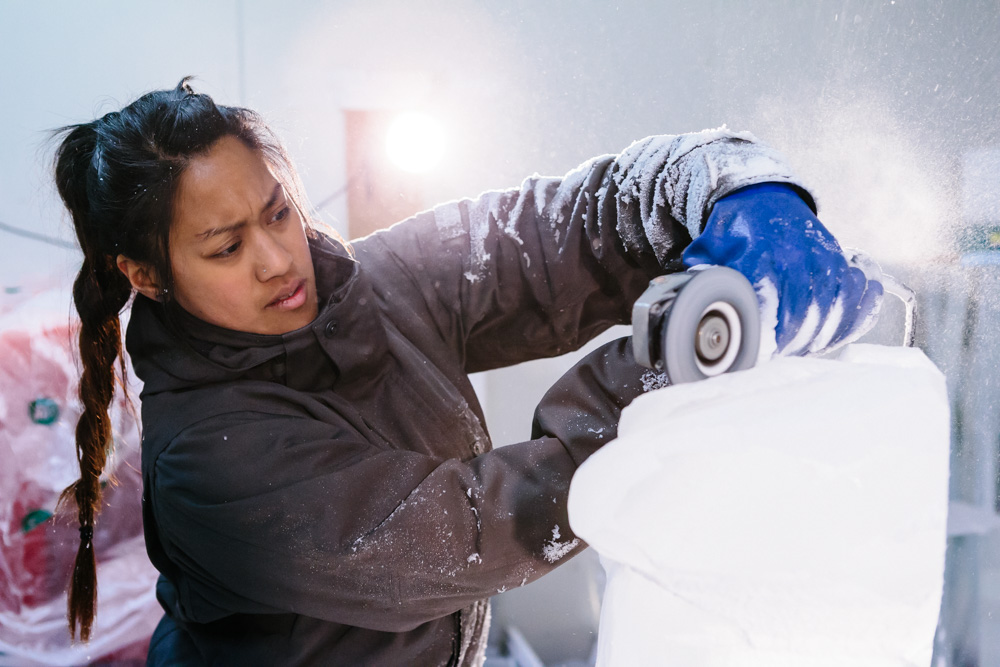
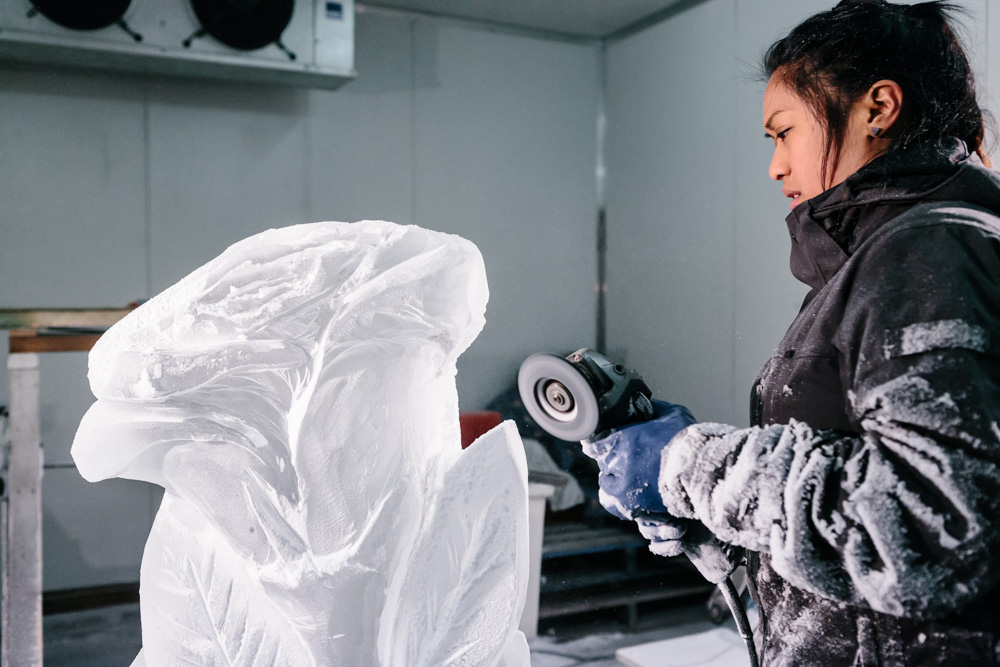
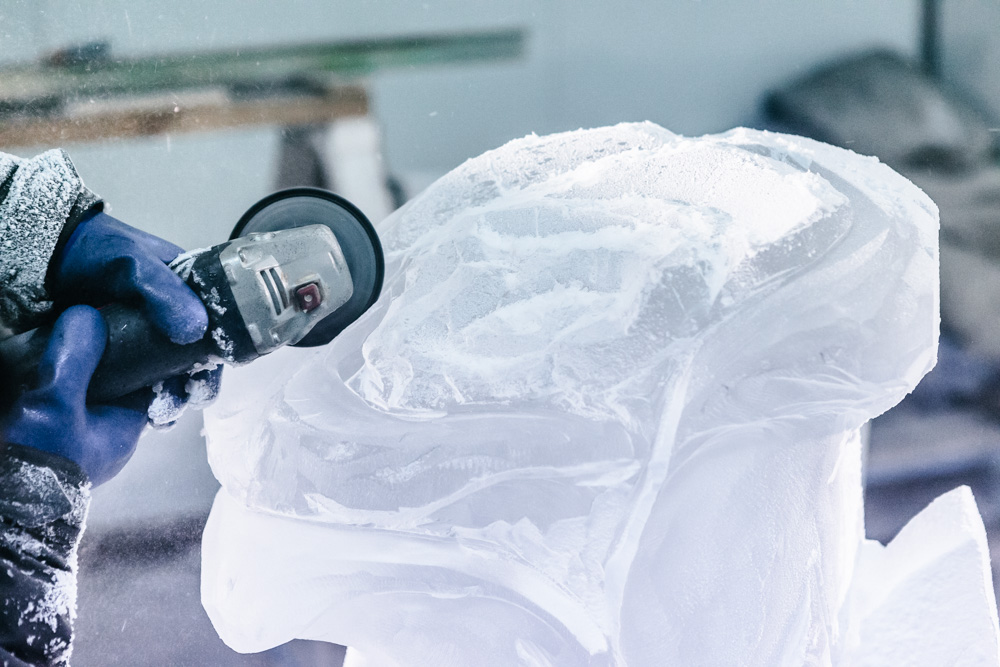
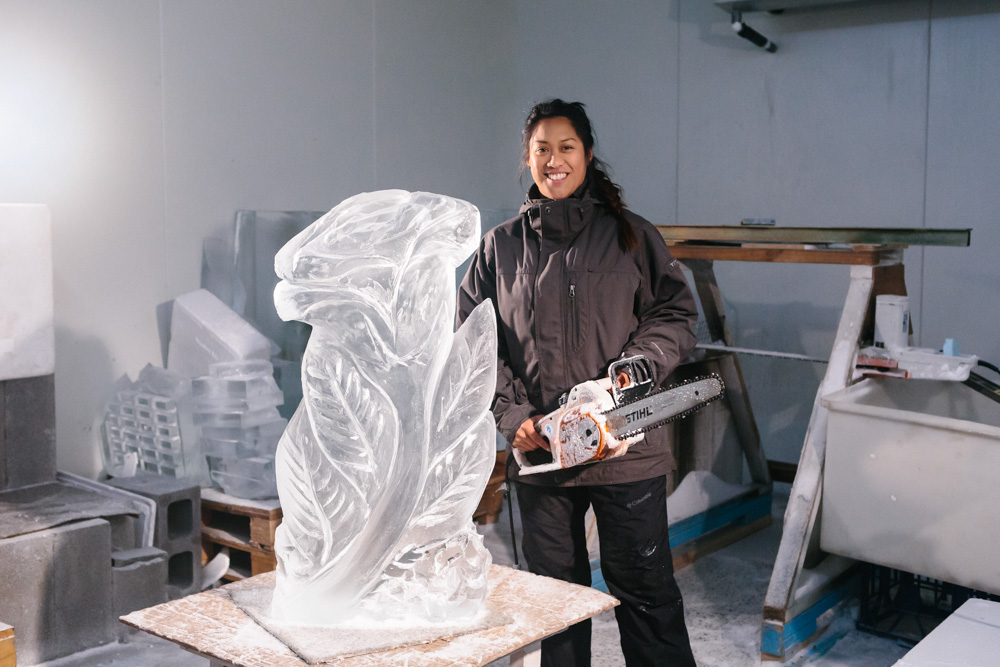
The completed ice sculpture by Anne Marie Taberdo.
Thank you for your time Anne Marie.
Interview and Photographs by Jason de Plater.
